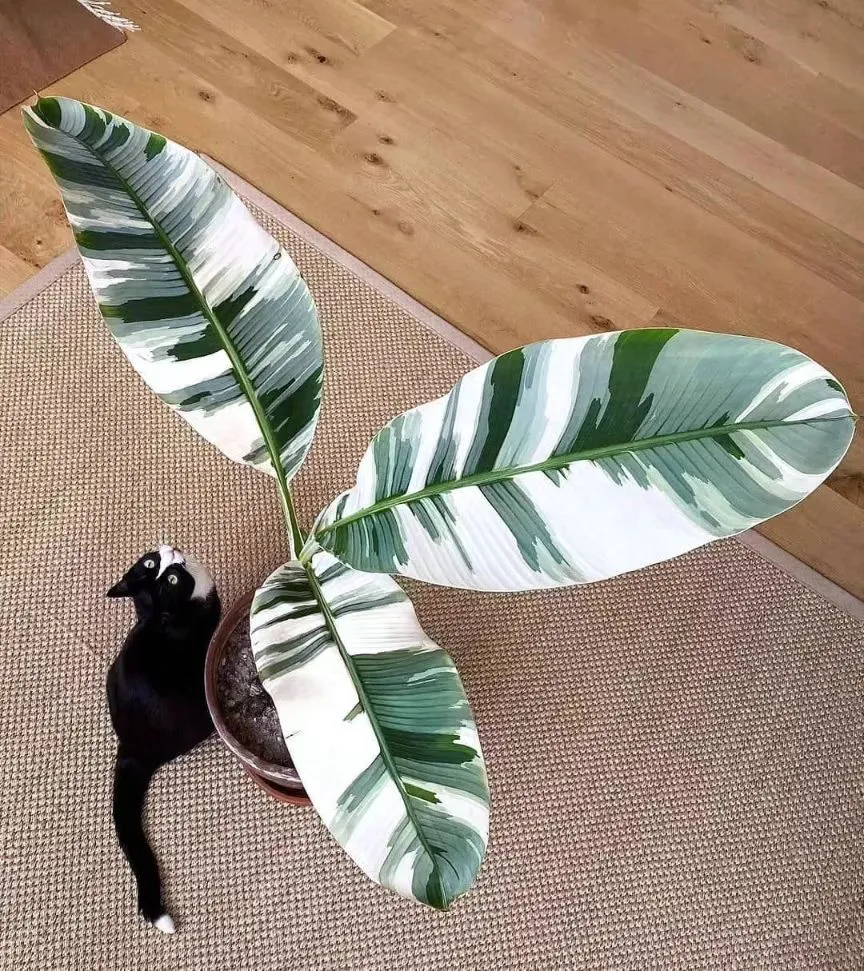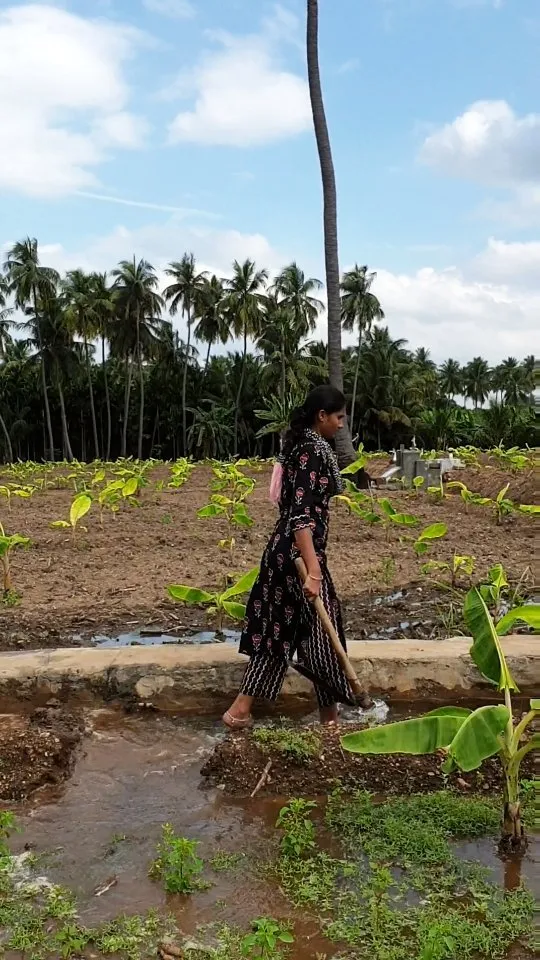As you begin your journey in caring for a banana tree, it’s essential to recognize the tree’s fundamental features. A fully grown banana tree can reach up to 7 meters in height, with a considerable number of leaves extending from the stem. The leaves can grow up to 2.7 meters long and 60 centimeters wide, forming a fan-like shape that’s unique to the banana tree.
Another distinctive feature of the banana tree is its fruit production. Bananas grow in clusters, known as hands, with each hand containing as many as 20 individual bananas. The hands emerge from the tree’s heart, where the flowering occurs and can take up to six months to mature.
It’s also worth noting that the banana tree is a perennial herb rather than a tree, and the stem is not made of wood, but rather a succulent material. Understanding these basic features will help you identify the visual characteristics of your banana tree and care for it accordingly.
Light Requirements for a Thriving Banana Tree



Like all plants, banana trees require a specific amount of light to grow optimally. Ideally, banana trees should receive at least 6 to 8 hours of direct sunlight each day. However, in hotter climates, some shade during the hottest part of the day can prevent the leaves from scorching.
If you live in a location with less-than-ideal sunlight conditions, you can supplement with grow lights. Ensure the lights are set up correctly to avoid overexposure or drowning your banana tree. It is also important to keep the tree away from drafts or heat sources, which can damage the leaves and fruit.
Additionally, it’s crucial to protect your banana tree from extreme conditions such as strong winds or frost, both of which can harm the tree. Try placing a protective barrier around the tree or moving it indoors during extreme weather.
Proper Watering Techniques for Banana Trees

Watering your banana tree is essential for optimal growth and fruit production. The frequency and amount of water required depends on various factors such as temperature, humidity, and soil type.
The best time to water your banana tree is early in the morning or late in the afternoon when the sun is not too strong. This helps minimize evaporation and ensures proper absorption of moisture.
When watering your banana tree, ensure that the water reaches the roots. One way to achieve this is by placing a drip line or a soaker hose around the base of the tree. This allows water to slowly seep into the soil, reaching the roots without causing any damage.
The frequency of watering your banana tree depends on the climate and soil conditions. In general, it’s recommended to water your banana tree weekly, providing enough water to moisten the root zone without flooding it.
Observe your banana tree for signs of under or overwatering. Yellowing leaves or dry, brittle tips may indicate under watering, while brown leaves, mushy roots, or standing water may signal overwatering.
Fertilizing Your Banana Tree for Healthy Growth



To ensure that your banana tree grows healthily, it is essential to use fertilizer. The best fertilizer for banana trees should contain a good balance of nitrogen, phosphorus, and potassium. The ideal ratio is 8:10:8, but it is important to avoid over-fertilizing, as this can harm the tree and reduce fruit production.
The best time to fertilize your banana tree is during the growing season, which is typically from spring to fall. You can use slow-release fertilizers, which release nutrients gradually over time, or use liquid fertilizers, which can be applied more frequently but require more maintenance.
When applying fertilizer, make sure to follow the instructions on the label carefully, and avoid getting the fertilizer on the leaves or stem of the tree, as this can cause burn damage. Spread the fertilizer evenly around the roots of the tree, and water thoroughly after application.
Potting a Banana Tree: Tips and Considerations

If you’re tight on space or prefer container gardening, growing a banana tree in a pot is a viable option. To get started, select a container that is at least 18 inches wide and deep, with good drainage. It’s essential to use high-quality, well-draining soil and add organic matter for optimal growth and moisture retention.
When planting your banana tree, ensure that the crown remains at the soil level and firm the soil around it to prevent air pockets from forming. Water your tree regularly, ensuring the soil stays moist but not waterlogged. Be mindful of the pot’s location, as banana trees require plenty of sunlight to thrive but can suffer in extreme heat or cold.
It’s important to monitor your banana tree’s growth and prune any damaged or excess growth periodically. Fertilize your tree every two months with a balanced fertilizer, and remember to repot it every few years when it outgrows its current container. With adequate care, you can enjoy a thriving banana tree right on your patio or balcony.
Propagating Banana Trees: Methods and Techniques



If you’re looking to propagate your banana tree and expand your collection, you’re in luck. There are various methods you can use to successfully propagate your banana trees, including:
- Seed propagation: Plant seeds obtained from ripe bananas, ensuring they are fresh and viable. Seed propagation takes a longer time to produce mature trees, but you’ll be able to grow unique varieties through this process.
- Sucker division: Divide the suckers that sprout at the base of the parent plant. This is the most common method of propagating banana trees among home gardeners.
- Tissue culture: Propagate banana trees using tissue culture techniques to produce disease-free plantlets that are genetically identical to the parent plant. This is a more complicated process and generally reserved for commercial growers.
Growth and Development Stages of a Banana Tree

To care for a banana tree effectively, it is essential to understand its various growth stages. From the emergence of suckers to the maturation of the tree, monitoring these stages is crucial.
The first stage is the emergence of the sucker, a small shoot that sprouts from the base of the adult plant. As the sucker grows, it will develop leaves and begin to take nutrients from the parent plant.
The next milestone is the establishment of the pseudostem, which is the main stem of the banana plant. It will grow up to 20 feet tall and produce leaves, eventually forming the mature trunk.
Following the establishment of the pseudostem, the plant will begin to develop flower buds, which will grow into a bunch of bananas. This stage can take up to nine months, depending on the variety.
Finally, the bananas will mature and become ready for harvest. At this stage, the fruit will be plump and firm, and the skin will have turned yellow or red, depending on the variety.
Identifying and Managing Pests Affecting Banana Trees
As with any plant, banana trees can fall victim to pests that can cause serious damage if left unchecked. Here are some of the most common pests that affect banana trees:
- Banana Moth: The larvae of this moth bore into the stem of the banana tree, causing a wilting effect and damaging the fruit.
- Mites: These tiny pests damage leaves and cause the plant to look unhealthy.
- Weevils: These pests attack the root of the banana tree and can cause it to stop growing.
- Borers: These pests lay their eggs inside the trunk or stem of the banana tree, causing severe damage.
To prevent pests from damaging your banana tree, it’s important to inspect it regularly for signs of infestation, such as wilting, discoloration, and holes in the leaves or fruit. If you notice any signs of pest activity, take the following steps to control the problem:
- Prune: Remove any dying or diseased leaves and stems immediately.
- Spray: Use an organic insecticide to spray the tree and surrounding area, following the instructions carefully.
- Remove: If the pest infestation is severe, remove the entire tree and dispose of it properly to prevent the spread of pests.
Recognizing and Treating Diseases in Banana Trees
Banana trees are susceptible to various diseases that can significantly affect their growth and productivity. Being able to recognize the signs of common diseases in banana trees and applying appropriate treatment is crucial to ensure their continued health.
Common Diseases in Banana Trees
- Panama Disease: caused by a fungus, this disease starts with wilting of lower leaves and moves upward, eventually killing the whole plant.
- Bunchy Top: caused by a virus, this disease causes stunted growth, crumpled leaves, and lack of fruit production.
- Sigatoka: caused by a fungus, this disease results in brown spots and streaks on leaves, leading to defoliation and a decline in yield.
Treatment Options for Banana Tree Diseases
The appropriate treatment for banana tree diseases depends on the specific disease and severity of the infection. However, some general options for treating and preventing diseases in banana trees include:
- Fungicides: these can be applied to control fungal diseases in banana trees. It is essential to follow the manufacturer’s instructions carefully to avoid plant damage or ineffective treatment.
- Removing Infected Tissue: cutting off and destroying (burning) infected leaves, stems, or fruit can help prevent the spread of disease to healthy parts of the tree.
- Proper Sanitation: keeping the area around the banana tree clean and free of debris can prevent fungal spores and other pathogens from infecting the plant.
Harvesting Bananas: Tips for Optimal Ripeness
Harvesting bananas is an exciting process, but knowing when to pick them is key to achieving maximum flavor and ripeness.
When deciding when to harvest, look for the bananas to turn from green to yellow, with a few brown spots on the skin. Waiting until the fruit is entirely yellow and spotted may indicate overripeness and result in a mushy texture and altered taste.
It’s important to use clean, sharp tools such as garden shears to cut the fruit from the tree to avoid bruising the stalks or stems. Be careful not to damage nearby fruit or leaves while harvesting to prevent decreased productivity the following season.
Once harvested, keep the bananas at room temperature to continue ripening. If you want to slow down the ripening process, put them in a cool area such as a refrigerator. Keep in mind that refrigerated bananas may experience texture changes and may not taste as flavorful as non-refrigerated bananas.
Conclusion
With this comprehensive banana tree care guide, you are now equipped with the knowledge and expertise to successfully grow and harvest your very own bananas. Remember to pay attention to the appearance and growth stages of your tree, provide adequate light and water, and fertilize it properly for optimal health and growth.
It’s also essential to be vigilant against pests and diseases that can harm your tree, and to harvest your bananas at the right time for optimal ripeness. With these tips and techniques, you can enjoy a bountiful harvest and take pride in being a successful banana tree caretaker.
Thank you for reading this guide, and we wish you all the best in your banana tree growing adventures!
FAQ
How often should I water my banana tree?
Banana trees should be watered deeply once a week, ensuring that the soil remains consistently moist but not waterlogged. Adjust the frequency based on the weather conditions and the moisture levels of the soil.
What are the light requirements for a banana tree?
Banana trees thrive in full sun exposure, requiring at least 6-8 hours of direct sunlight per day. However, they can tolerate some shade, especially during the hottest part of the day.
How do I fertilize my banana tree?
Use a balanced fertilizer with a ratio of 10-10-10 or 14-14-14, applying it every 6-8 weeks during the growing season. Spread the fertilizer evenly around the base of the tree, avoiding direct contact with the trunk.
Can I grow a banana tree in a pot?
Yes, you can grow a banana tree in a pot. Choose a large container with excellent drainage, use well-draining potting soil, and ensure the tree receives adequate sunlight and water. Regularly check and repot the tree as it grows.
How do I propagate a banana tree?
Banana trees can be propagated through suckers, which are small shoots growing from the base of the tree. Carefully remove a sucker with roots attached, and plant it in a new location or pot with well-draining soil.
What are the common pests that affect banana trees?
Common pests that can affect banana trees include aphids, mealybugs, and banana weevils. Regularly inspect your tree for signs of infestation, and use organic or chemical insecticides as needed to control the pests.
How do I know when to harvest my bananas?
Bananas are ready to be harvested when they have a yellow color and easily come off the bunch when gently twisted. Avoid picking them too early as they may not ripen properly, and handle them with care to prevent bruising during harvest.









